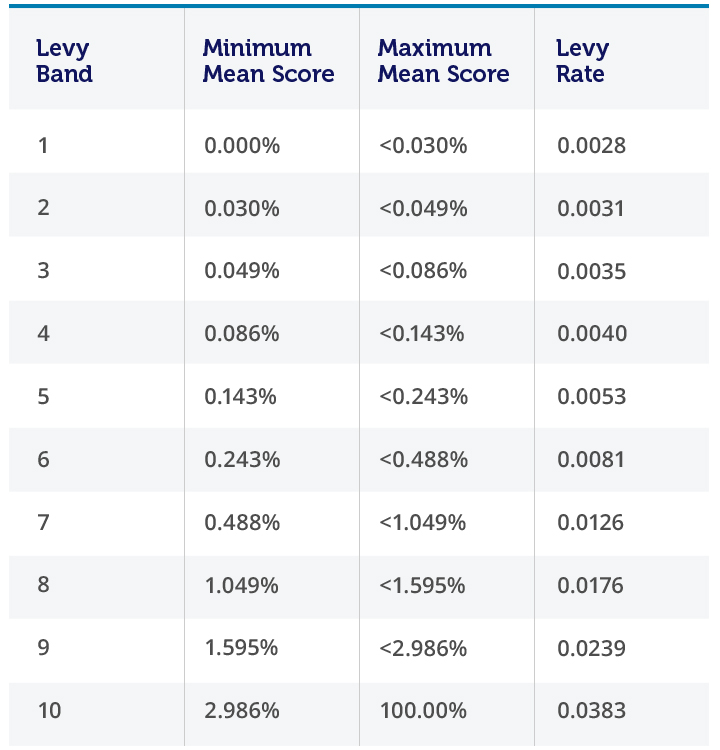- The levy scaling factor (LSF) has been reduced to 0.48
- The scheme based levy remains at 0.000021 x unstressed liabilities
- The risk based levy cap has been reduced to 0.5% (0.005000) x unstressed liabilities
- The insolvency risk levy rates for 2018/19 are as follows

What’s changed?
How insolvency risk scoring has changed
- As well as Experian scores, we’re now using public credit ratings and the Standard and Poor’s credit model for certain regulated financial services businesses
- There are five new scorecards in the Experian model
- Only six months’ insolvency risk scores have been used in 2018/19 but we’re going to use twelve monthly insolvency risk scores for the remainder of the current levy triennium (2019/20 and 2020/21)
How the requirements for contingent asset recognition have changed
For 2018/19, if you have a Type A contingent asset – a guarantee – that reduced your levy by £100,000 or more, you had to send us a professional valuation report or guarantor strength report that supported the ‘realisable recovery’ amount certified by 29 March 2018.
How accuracy of reporting has been improved
- Some smaller schemes no longer have to involve actuaries in certifying deficit reduction contributions below £1 million
- It’s easier to provide information on certain types of block transfers - exempt transfers
- We’ve revised some of the asset and liability stress factors
- In some cases, we’ve relaxed the evidence of title requirements for ABC arrangements with property assets

